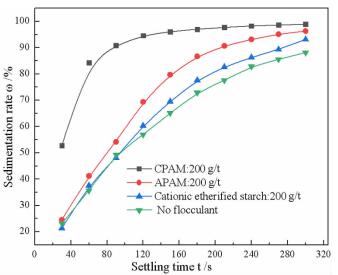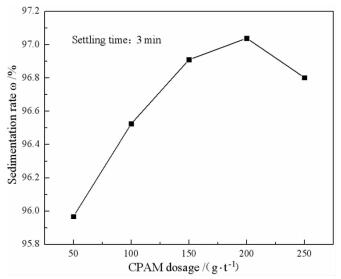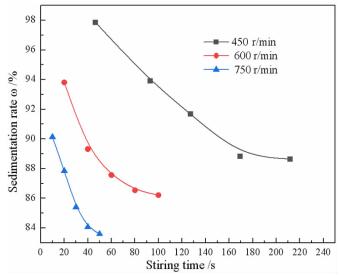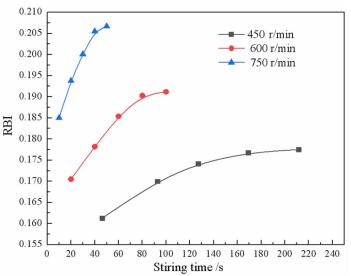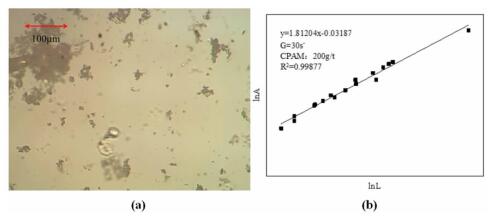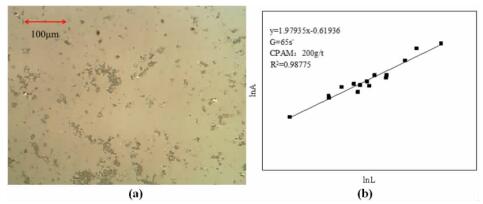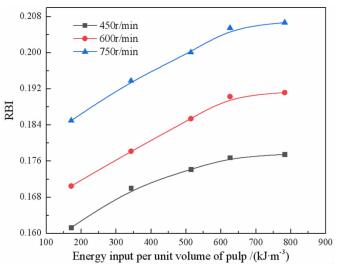Hao SUN, Maolin LI, Rui CUI, Hongqiang JIANG, Sheng ZHOU, Jiangfeng NING. Floc Evolution and Characterization of Lead-zinc Tailing in Shearing Environment[J]. Conservation and Utilization of Mineral Resources, 2020, 40(4): 75-81. doi: 10.13779/j.cnki.issn1001-0076.2020.04.009
| Citation: |
Hao SUN, Maolin LI, Rui CUI, Hongqiang JIANG, Sheng ZHOU, Jiangfeng NING. Floc Evolution and Characterization of Lead-zinc Tailing in Shearing Environment[J]. Conservation and Utilization of Mineral Resources, 2020, 40(4): 75-81. doi: 10.13779/j.cnki.issn1001-0076.2020.04.009
|
Floc Evolution and Characterization of Lead-zinc Tailing in Shearing Environment
-
Hao SUN1,2,
-
Maolin LI1,2,3,
-
Rui CUI1,2,
-
Hongqiang JIANG1,2,
-
Sheng ZHOU1,2,
-
Jiangfeng NING1,2
-
1.
College of Resources and Environmental Engineering, Wuhan University of Science and Technology, Wuhan 430081, China
-
2.
Hubei Key Laboratory for Efficient Utilization and Agglomeration of Metallurgic Mineral Resources, Wuhan 430081, China
-
3.
Changsha Research Institute of Mining and Metallurgy Limited Liability Company, Changsha 410012, China
-
Abstract
A lead-zinc mine has certain requirements for the strength of the tailings particle floc. In order to study how to characterize and increase the floc strength, the shearing environmental factors such as the type and dosage of flocculant, stirring time, stirring speed, and input energy per pulp were investigated. The effect on the shear flocculation sedimentation of a lead-zinc tailing was tested by corresponding flocculation sedimentation test, particle video microscopy (ParticleView V19) real-time monitoring and microscopic floc image analysis. And the flocculation mechanism was discussed in order to reveal flocs relationship between formation process and flocculation effect. The results showed that the flocculation effect of flocculant on the lead-zinc tailings from strong to weak was as follows: cationic polyacrylamide> anionic polyacrylamide> cationic etherified starch. The optimal dosage of cationic polyacrylamide (CPAM) was 200 g/t. PAM could reduce the kinetic potential of the particle surface and agglomerate. When the flocculant dosage was excessive, the entire system became positively charged. Due to the mutual repulsion between the positive charges, the floes were dispersed again, and the re-stabilization phenomenon was occurred, which could weaken the flocculation effect. Stirring time, stirring speed, and unit pulp input energy had a great influence on the shear flocculation behavior of the lead-zinc tailing. The stirring time was related to the growth and fragmentation of the floc. The stirring intensity was related to the shear strength of the floc. The greater the stirring intensity, the higher the flocculation final stable shear strength and the more regular the morphology were. There was a limit value for the unit pulp input energy. When the limit value was exceeded, the floc formation and fragmentation reached a relatively balanced steady state, and the floc could exist stably under this stirring system.
-

-
References
| [1] |
吴文添加絮凝药剂的尾矿砂浆充填材料的单轴抗压强度试验研究[J].岩土力学, 2010, 31(11):3367-3372.
Google Scholar
|
| [2] |
邬顺科, 邓美姣, 孙伟.搅拌因素对高岭石疏水剪切絮凝浮选行为的影响及机理分析[C]//第三届全国选矿专业学术年会.2006.http://d.wanfangdata.com.cn/conference/6216260
Google Scholar
|
| [3] |
张金凤, 张庆河, 乔光.全水体紊动对黏性泥沙絮凝影响研究[J].水利学报, 2013, 44(1):67-72, 82.
Google Scholar
|
| [4] |
张乃予, 周晶晶, 王捷.黏性泥沙絮团强度的试验研究综述[J].泥沙研究, 2015(5):75-80.
Google Scholar
|
| [5] |
肖淑敏, 赵建海, 魏磊, 等.搅拌条件对氢氧化镁混凝性能及絮体特性的影响[J].化工进展, 2018, 37(2):761-766..
Google Scholar
|
| [6] |
宋少先, 李长, 崔洪山.细粒矿物絮团浮选的理论和应用[J].国外金属矿选矿, 2007(5):4-9, 40..
Google Scholar
|
| [7] |
张东晨, 侯志翔, 周倩倩, 等.煤炭生物絮凝絮体分形试验研究[J].煤炭学报, 2015, 40(5):1148-1152.
Google Scholar
|
| [8] |
王晓昌, 丹保宪仁.絮凝体形态学和密度的探讨——Ⅰ.从絮凝体分形构造谈起[J].环境科学学报, 2000, 20(3):257-262.
Google Scholar
|
| [9] |
Anon. Sparkle effect of unique particle size distribution, KR101297023[P]. 2013-08-14.
Google Scholar
|
| [10] |
牛福生, 李卓林, 张晋霞.微细粒赤铁矿絮凝体物理特性表征研究[J].矿产保护与利用, 2016(5):70-73, 78.
Google Scholar
|
| [11] |
刘东京.废水制备聚硅硫酸盐絮凝剂及絮凝体分形仿真模拟[D].南昌: 南昌大学, 2012.http://d.wanfangdata.com.cn/thesis/Y2141920
Google Scholar
|
-
-
Access History






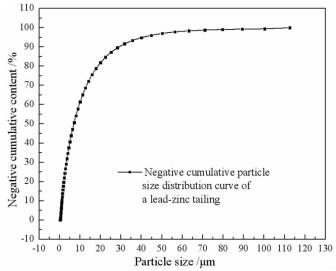

 DownLoad:
DownLoad:
